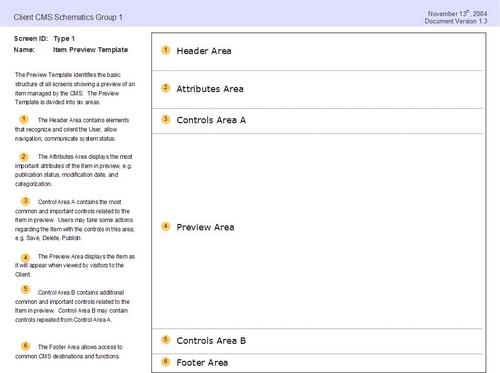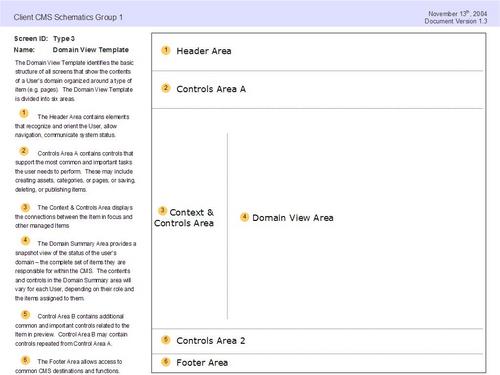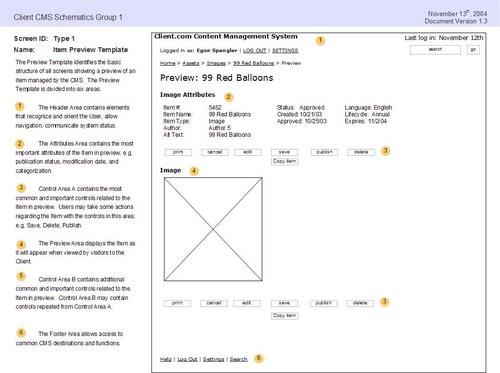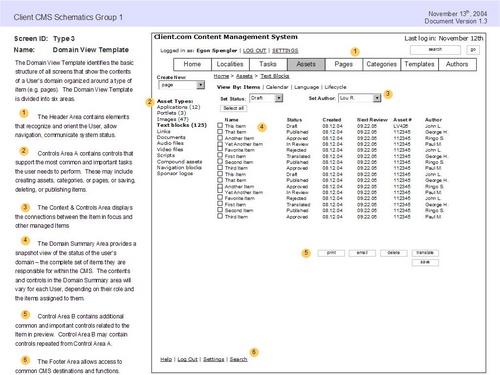October 17th, 2005 — 12:00am
Art Interactive and Glowlab, a local “network of psychogeographers” is using Central Square as an exhibition and investigation space for the next nine weeks, conducting experiments with laughing bicycles, art/clothing made from trash, and other psychogeographic phenomena.
Wikipedia says, “Psychogeography is “The study of specific effects of the geographical environment, consciously organised or not, on the emotions and behaviour of individuals”, according to the article Preliminary Problems in Constructing a Situation, in Situationniste Internationale No. 1 (1958) .”
I first heard the term psychogeography while reading J.G. Ballard’s The Terminal Beach, Concrete Island, and Crash. Richard Calder is a more recent example of a writer working with these ideas. (Note to the curious: Calder’s writings include some *unusual* tastes and flavors.) Calder may have optioned one of his novels for film production. Of the members of the Situationist International mentioned by Wikipedia, I’m most familar with Guy Debord’s writings, from quite a few semina sessions on media theory, cultural theory, postmodern theory.
Regardless of psychogeography’s origins, all roads lead to the internet now: a quick Google query turns up psychogeography.org.uk, which links to an essay titled Dada Photomontage and net.art Sitemaps that compares Dadaist photomontages to the familar sitemap. The first two citations in the piece are the Yale Style Guide, and Tufte’s Visualizing Information.
The circle closes easily, since one of the link threads leads to socialfiction.org, where you find a page on [Generative] Psychogeogrpahy. Random note; socialfiction’s banner carries references to “carthographic sadism * gabber avant-gardism * experimental knowledge * DIY urbanism” – all likely cadidates for Amazon’s SIP statistically improbable phrases listings. Perhaps most intriguing is “disco socialism”. Now that might catch on in some public policy circles that could use a bit of help picking a good back beat…
A quick selection of events that looked interesting:
TUESDAY NOVEMBER 15TH, 6:30PM – 8:30PM
6:30PM – 8:30PM: N55 Artist Talk & Dinner
Hosted with the Center for Advanced Visual Studies at MIT
Danish artists’ group N55 creates mobile tools and situations for everyday living: a workplace, a modular boat, a shop, a factory, a clean air machine, a commune, and even a personal rocket. Food & Drink provided. NOTE: This event is hosted at CAVS, 265 Mass Ave, 3Fl (Bldg N-52, Rm 390), Cambridge MA.
THURSDAY OCTOBER 27TH, 6PM – 9PM
6PM – 9PM: Glowlab Party!
Hosted by the Boston Society of Architects. All young artists, designers, architects and their friends are invited to enjoy good food and cheer and become a part of a growing network of young professionals who are shaping the future of Boston. Free drinks & entertainment. RSVP to bsa@architects.org.
For those of you with fashion inclinations (spurred by watching too much InStyle?)
SATURDAY DECEMBER 10TH, 12PM – 6PM
12PM – 5PM: DIY Wearable Challenge
Make an interactive outfit from Cambridge trash and discarded electronics Led by Jonah Brucker-Cohen and Katherine Moriwaki.
Related posts:
Comment » | Architecture, Art
October 16th, 2005 — 12:00am
OCLC has caught the socially constructed metadata fever. A release on the OCLC site titled “User-contributed content pilot” discusses a pilot program to allow Open WorldCat users to add publicly visible metadata, in the form of reviews and descriptive details, to existing records.
This looks the latest step in the wave of exploration of methods and models for putting socially constructed metadata into practice that’s playing out in public. (Is this necessarily done in public? I’m curious to hear thoughts on how this might be done with closed or cloaked communities, like IBM’s intranet).
Broadly, it looks like a wide variety of entities are following the standard new product or service development cycle with regards to socially constructed metadata. A simplified version of this cycle is:
1.Conceptualization, technology development
2.Product development
3.Introduction to market
4.Market Acceptance and growth
5.Ongoing Market as conventional product
A quick review of known social bookmarking / tagging ventures distributed over a number of organizations supports the idea that each experiment is at one of these stages.
Some visualizations of development and prototype cycles are available here, and here.
Where’s it headed? I think we’ll see at least forms forms or applications of socially constructed metadata stabilize and become publicly recognized and accepted in the near future, with more on the way that will surprise everyone. Those four are:
1. Fee for services models, paying for access to premium quality pools of collectively managed information under professional (paid) editorial custody. OCLC could adopt this model.
2. Non-commercial community driven pools of social knowledge. This might be delicio.us.
3. Deployment as an enabler or attribute of other product / service models. Flickr is an example of this perhaps.
4. Publicly free but commercialized information mining operations, deriving salable value from formalizing the semantic relationships between people, groups, and information objects. TagCloud.com might fall into this group, or maybe Cloudalicious.
5. Something very innovative I will wish I’d thought of when it’s released.
Excerpts from the OCLC release:
“As of October 9, 2005, Open WorldCat users are able to add their own content to authoritative WorldCat information about library-held titles. Available under the Details and Reviews tabs, this functionality permits those who have located library items through Open WorldCat to return to the interface and add evaluative content.”
“User-contributed content will help extend the OCLC cataloging cooperative to include non-cataloging library professionals and – more importantly – patrons. Their shared participation in WorldCat content creation and management could foster a larger sense of library-centered community and generate more interest in library resources.”
Related posts:
Comment » | Social Media
October 9th, 2005 — 12:00am
Usability issues pop up in the strangest places. For example, Monday night, while I was sitting in the Lisbon Tourist Police office, filling out a report on how I’d just been robbed. The officer handling my report took a moment to apologize for how long it took him to complete the process. He said, “We have a new internet based system to fill out all the forms, and its very confusing.” Seems that Accenture created a .net based environment for the Portugese police to record assaults on travellers, but they didn’t pay proper attention to user experience and usability concerns. The officers use all the classic workarounds: composing text in a word-processor before pasting it into input fields, post-it notes for shortcuts and passwords all over the workstations; and they live in fear of hitting the wrong navigation button and losing all their in-progress work.
It’s not as good as getting my wallet back, but it might make a good anecdote at the next IA cocktail hour.
Related posts:
Comment » | Travel, User Experience (UX)
September 24th, 2005 — 12:00am
User Research can be so relentlessly earnest and purposeful that it gets to be a bit stifling. After a few dozen well-crafted personas work their way purposefully through a set of mildly challenging but inevitably successful scenarios for the tenth time in one week, a diligent user researcher is likely to be hungering for something a bit more satisfying; something akin to the persona, but more fully-rounded; something that conveys the ambiguous complexity of human character with honesty; something not only insightful, but consistently forthright across a multiplicity of aspects. Perhaps even something that is genuinely malapert.
Food Court Druids, Cherohonkees, And Other Creatures Unique to the Republic is that something. Written by Robert Lanham, it’s a hilarious collection of idiotypes – stereotypes outside the design world, personas within – couched as the outcome of serious scientific inquiry whose method is called idiosyncrology.
I advise reading with humility close at hand, since it’s likely you’ll find yourself inside, and it’s only fair to laugh at everyone if you’re included…

Here’s the description:
Lanham, author of The Hipster Handbook and creator and editor of the Web site www.freewilliamsburg.com, extends his anthropological examination of Americans beyond trendy Brooklyn neighborhoods to the entire country, where Yanknecks (“rebel-flag-waving rednecks who live outside the South”), Sigmund Fruits (“people who insist on telling you about their dreams”) and others have existed thus far without being formally studied by “idiosyncrologists” like Lanham and his team. Presented with the authoritative tone of a serious anthropological study, complete with an Idio Rank Scale that assesses the weirdness of each type, many of Lanham’s profiles are hilariously accurate descriptions of co-workers, family members, friends and other acquaintances that almost every American has encountered at some point in their lives. There are the Cornered Rabid Office Workers (CROWs), who “claim to be poets or playwrights” when discussing their work with strangers, “even if they just spent the last nine hours doing data entry on the McFlannery acquisition,” and Hexpatriates, Americans who decry everything about America yet never actually leave the country (and who “refer to the Loews multiplex at the mall as ‘the cinema’ and the Motel Six by Hardees as ‘the pensione”). Illustrations by Jeff Bechtel, depicting the fashion sense of Holidorks (people who wear holiday-themed clothing) and Skants (women with shapely butts who always wear spandex pants), enhance Lanham’s characterizations.
Related posts:
Comment » | Reading Room, User Research
September 23rd, 2005 — 12:00am
But not the new features list for the next release. In a previous post Lotus Notes UI = Disease, I cited a SearchDomino.com article in which Ken Bisconti, IBM Lotus vice president of Workplace, portal and collaboration products, is quoted as saying “Through improvements such as contextual collaboration and support for composite apps, we’ve gone *above and beyond simple UI enhancement*”. [Emphasis mine.] Above and beyond? I think UI enhancement – which is often far from simple, especially when the existing user experience is fundamentally flawed – is exactly what Notes needs.
After watching software development first hand, I know that many Product Managers understand the importance of quality, design, and meeting users’ needs, but do not feel empowered to work against the pervasive featuritis that leads to unusable bloatware. Good product managers and designers often work for organizations or managers who remain blinded by standard practices and marketing driven perceptions of priority, and thus feel it’s impossible to step off the new functionality treadmill.
That is, unless they are armed with information that indicates to the contrary.
The article in Ken’s statement appears, Beyond Notes 7.0: IBM Lotus sketches ‘Hannover’ user experience, is dated June 14, 2005. Yet when digging it bit more, I discovered an earlier piece from May 9, 2005, titled Better UI tops Notes users’ wish list, in which the same author, Peter Blochner, reports on the results of an open request for Lotus Notes features made by Ed Brill(Brill heads the worldwide sales group for Notes, according to Blochner). In his review of user responses to Brill’s question, Blochner says, “the most requested feature was for an improved user interface for Notes.”
Simple UI enhancement is all that the users want, and they’ve said it themselves. Yet Notes is going way beyond this? Despite repeated and public requests for this from committed users (Ed Brill’s blog is a predominantly Notes-friendly forum) in their own voices, and in response to questions from your own team. Why not listen to them?
For reference, Blochner’s article is reproduced below:
By Peter Bochner
09 May 2005 | SearchDomino.com
IBM is already working on plans for the next major releases of Lotus Notes beyond 7.0. Last week, on May 3, visitors to the blog site of Ed Brill, who heads up worldwide sales for Lotus Notes and Domino, were asked, “If you could add one feature to Lotus Notes 7.x, what would it be?”
As of May 9, his question has garnered 184 comments, although many respondents circumvented the question’s one-feature limit by submitting multiple posts.
To kick off the thread, Brill provided his own request – multi-level undo – and that was reiterated by seven posters. However, the most requested feature was for an improved user interface for Notes. “It’s time to give the Notes client UI a much-needed facelift,” wrote one respondent. When people say Exchange is better than Notes, said another, “What they are saying is that the Outlook interface is . . .nicer than the [Notes] mail template. A top UI for the next release would top off a lot of end-user complaints.”
Only a handful of responses mentioned specific suggestions for improving the UI. One asked for “a first-class, richly configurable Welcome Panel that resembles a Web portal.” Another suggested UI improvements such as “more user-selectable columns in folders/views, having preferences all in one place, or rules that can act on documents already in the mail file.” Still another requested “a sexy modern mail template with a single UI in Notes and on the Web.”
Finally, one user said, “What would it be worth if every part of the Notes mail experience, which …is the Notes interface for the majority of users, from the toolbars to the icons to interaction and behavior, was consistent, modern, clean and inviting? There is no point in having the superior everything if it’s not appealing to look at.”
P.S. Brill has requested a moratorium on suggestions, because the thread is now so long it has become unwieldy.
Related posts:
Comment » | User Experience (UX), User Research
September 22nd, 2005 — 12:00am
Lotus Notes has one of the most unpleasant and unwelcoming User Experiences this side of a medium-security prison where the warden has aspirations towards interior design and art instruction. One of the most painful aspects of the Notes experience is the default settings for font size and color in the email window. The default font size (for Macs) is on the order of 7 point type, and the default color for unread messages is — ironically — red. The combination yields a user experience that resembles a bad skin rash.
I call it “angry red microNotes” disease, and it looks like this:
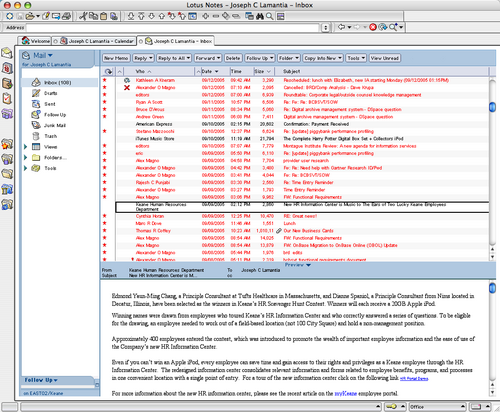
Overall, it has an unhealthy affect on one’s state of mind. The undertones of hostility and resentment running throughout are manifold. And naturally, it is impossible to change the default font size and color for the email reader. This is further confirmation for my theory that Notes has yet to escape it’s roots as a thick client for series of unconnected databases.
After three weeks of suffering from angry red microNotes, I realized I was literally going blind from squinting at the tiny type, and went to Google for relief. I found niniX 1.7, a utility that allows Mac based Lotus Notes users the ability to edit the binary format Notes preferences file, and change the font size of the email client. I share it in the hopes that others may break the chains that blind them. This will only solve half the problem — if someone can figure out how to change the default color for unread messages to something besides skin rash red, I will happily share with the rest of the suffering masses (and apparently there are on the order of 118 million of us out there).
But will it always be this (horrible) way?
In Beyond Notes 7.0: IBM Lotus sketches ‘Hannover’ user experience Peter Bochner of SearchDomino.com says this of the next Notes release, “Notes has often been criticized for its somewhat staid user interface. According to IBM’s Bisconti, in creating Hannover, IBM paid attention “to not just the user interface, but the user experience.“
Okay… So does that mean I’ll have my choice of diseases as themes for the user experience of my collaboration environment?
According to Ken Bisconti, IBM Lotus vice president of Workplace, portal and collaboration products, “Through improvements such as contextual collaboration and support for composite apps, we’ve gone above and beyond simple UI enhancement”.
I think simple UI enhancement is exactly what Ken and his team should focus on for the next several years, since they have so much opportunity for improvement.
Comment » | Enterprise, Tools, User Experience (UX)
September 17th, 2005 — 12:00am
A tip o’ the hat to Richard Boakes for foiling a second-rate spammer by buying up the domain they were promoting with comment spam before they did.
Related posts:
Comment » | The Media Environment
September 15th, 2005 — 12:00am
JP Morgenthal of DMReview.com offers a snapshot of the process for defining enterprise semantics in Enterprise Architecture: The Holistic View: The Role of Semantics in Business.
Morgenthal says, “When you understand the terms that your business uses to conduct business and you understand how those terms impact your business, you can see clearly how to support and maintain the processes that use those terms with minimal effort.”
Not a surprise, but how to make it happen, and how to explain that to the business?
Related posts:
Comment » | Architecture, Information Architecture
September 14th, 2005 — 12:00am
In the same way that information architecture helps take users’ understandings of the structure, meaning, and organization of information into account at the level of domain-specific user experiences, information spaces, and systems, the complex semantic boundaries and relationships that define and link enterprise-level domains is a natural area of activity for enterprise information architecture.
Looking for some technically oriented materials related to this level of IA – what I call enterprise semantic frameworks – I came across a solid article titled Enterprise Semantics: Aligning Service-Oriented Architecture with the Business in the Web Services Journal.
The authors – Joram Borenstein and Joshua Fox – take a web-services perspective on the business benefits of enterprise-level semantic efforts, but they do a good job of laying out the case for the importance of semantic concepts, understanding, and alignment at the enterprise level.
From the article abtract:
“Enterprises need transparency, a clear view of what is happening in the organization. They also need agility, which is the ability to respond quickly to changes in the internal and external environments. Finally, organizations require integration: the smooth interoperation of applications across organizational boundaries. Encoding business concepts in a formal semantic model helps to achieve these goals and also results in additional corollary benefits. This semantic model serves as a focal point and enables automated discovery and transformation services in an organization.”
They also offer some references at the conclusion of the article:
- Borenstein, J. and , J. (2003). “Semantic Discovery for Web Services.” Web Services Journal. SYS-CON Publications, Inc. Vol. 3, issue 4. www.sys-con.com/webservices/articleprint.cfm?id=507
- Cowles, P. (2005). “Web Service API and the Semantic Web.” Web Services Journal. SYS-CON Publications, Inc. Vol. 5, issue 2. www.sys-con.com/story/?storyid=39631&DE=1
- Genovese, Y., Hayword, S., and Comport, J. (2004). “SOA Will Demand Re-engineering of Business Applications.” Gartner. October 8.
- Linthicum, D. (2005). “When Building Your SOA…Service Descriptions Are Key.” WebServices.Org. March 2005. www.webservices.org/ws/content/view/full/56944
- Schulte, R.W., Valdes, R., and Andrews, W. (2004). “SOA and Web Services Offer Little Vendor Independence.” Gartner. April 8.
- W3C Web Services Architecture Working Group: www.w3.org/2002/ws/arch/
Related posts:
Comment » | Architecture, Information Architecture, Modeling
September 7th, 2005 — 12:00am
Comment » | Information Architecture


